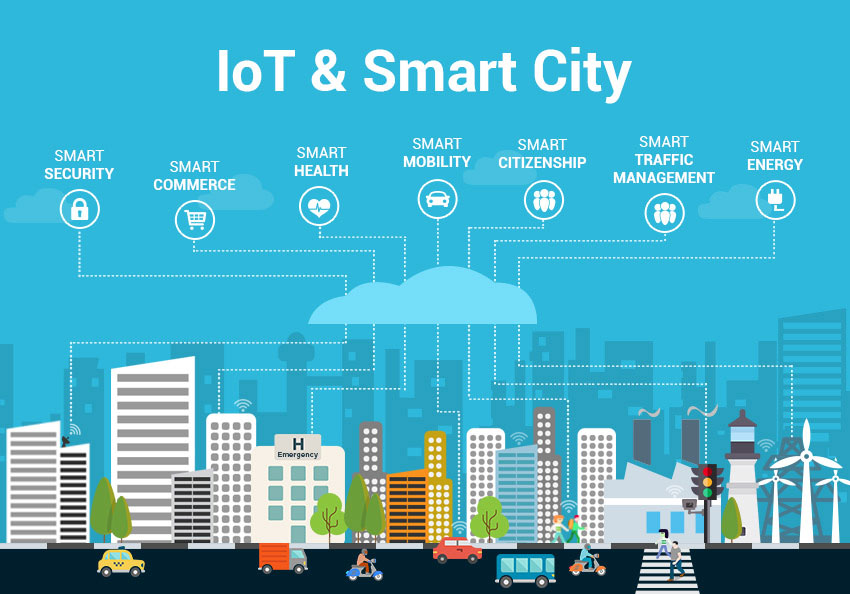The concept of Smart Cities is rapidly gaining traction as urban areas around the globe embrace the transformative power of the Internet of Things (IoT). By integrating advanced technologies and data-driven solutions, cities are evolving into interconnected ecosystems that enhance the quality of life for their residents. This article delves into how IoT is reshaping urban landscapes, making them more efficient, sustainable, and responsive to the needs of their inhabitants.
As we explore the intricacies of Smart Cities, you will learn about the various applications of IoT, from smart transportation systems that reduce congestion to energy-efficient buildings that minimize environmental impact. We will also discuss the role of data analytics in urban planning and how it enables city officials to make informed decisions that benefit the community. Furthermore, we will highlight the challenges that come with implementing these technologies and the importance of addressing privacy and security concerns.
Join us on this enlightening journey as we uncover the future of urban living. Discover how Smart Cities are not just a vision for tomorrow but a reality that is being built today. By the end of this article, you will have a comprehensive understanding of the innovations driving urban development and the potential they hold for creating a better, smarter world. Don’t miss out on the opportunity to be part of this exciting transformation!
The Role of IoT in Urban Infrastructure
The Internet of Things (IoT) is revolutionizing urban infrastructure by enabling real-time data collection and analysis. Smart sensors embedded in roads, bridges, and buildings provide critical information about structural integrity, traffic patterns, and energy consumption. This data allows city planners to make informed decisions, optimizing maintenance schedules and resource allocation.
Moreover, IoT devices facilitate the integration of various urban systems, such as transportation, energy, and waste management. By creating a connected ecosystem, cities can enhance operational efficiency and improve the quality of life for residents. For instance, smart traffic lights can adjust their timing based on real-time traffic conditions, reducing congestion and emissions.
Enhancing Public Safety with Smart Technologies
Public safety is a paramount concern for urban areas, and IoT technologies are playing a crucial role in enhancing security measures. Smart surveillance systems equipped with AI capabilities can analyze video feeds in real-time, identifying suspicious activities and alerting law enforcement agencies promptly. This proactive approach to security helps in crime prevention and ensures a safer environment for citizens.
Additionally, IoT-enabled emergency response systems can streamline communication between first responders and control centers. By utilizing real-time data from various sources, such as traffic conditions and weather forecasts, emergency services can optimize their response times, ultimately saving lives and minimizing damage during crises.
Smart Transportation Solutions
Transportation is a critical component of urban life, and IoT is transforming how cities manage their transit systems. Smart public transportation solutions, such as real-time tracking of buses and trains, provide commuters with accurate arrival times and reduce wait times. This not only enhances user experience but also encourages the use of public transport, leading to reduced traffic congestion.
Moreover, IoT technologies enable the development of smart parking solutions that guide drivers to available parking spots, minimizing the time spent searching for parking. This innovation not only improves traffic flow but also reduces carbon emissions, contributing to a more sustainable urban environment.
Energy Management and Sustainability
As cities grow, so does their energy consumption. IoT technologies are essential in managing energy use efficiently and promoting sustainability. Smart grids equipped with IoT sensors can monitor energy consumption patterns and adjust supply accordingly, reducing waste and lowering costs for consumers.
Furthermore, IoT-enabled smart buildings can optimize energy usage by automatically adjusting lighting, heating, and cooling systems based on occupancy and weather conditions. This not only enhances comfort for residents but also significantly reduces the carbon footprint of urban areas, aligning with global sustainability goals.
Waste Management Innovations
Effective waste management is a significant challenge for urban areas, and IoT is providing innovative solutions to tackle this issue. Smart waste bins equipped with sensors can monitor fill levels and optimize collection routes for waste management trucks. This reduces operational costs and minimizes the environmental impact of waste collection.
Additionally, IoT technologies can facilitate recycling efforts by providing data on waste composition, helping cities develop targeted recycling programs. By promoting responsible waste disposal and recycling, cities can work towards a circular economy, reducing landfill waste and conserving resources.
Smart Healthcare Solutions
The integration of IoT in healthcare is transforming how cities manage public health. Smart health monitoring devices can track vital signs and send real-time data to healthcare providers, enabling proactive medical interventions. This is particularly beneficial for managing chronic diseases and ensuring timely care for patients.
Moreover, IoT technologies can enhance emergency medical services by providing real-time data on patient conditions during transport. This allows medical teams to prepare for specific needs before arrival at healthcare facilities, improving patient outcomes and overall healthcare efficiency.
Citizen Engagement and Smart Governance
Smart cities are not just about technology; they also focus on citizen engagement and participatory governance. IoT platforms can facilitate communication between city officials and residents, allowing citizens to report issues, provide feedback, and participate in decision-making processes. This fosters a sense of community and ensures that urban development aligns with the needs of residents.
Additionally, data collected from IoT devices can be used to inform public policies and urban planning initiatives. By analyzing citizen feedback and usage patterns, city planners can create more responsive and inclusive urban environments that cater to the diverse needs of their populations.
The Future of Smart Cities: Challenges and Opportunities
While the potential of IoT in creating smart cities is immense, there are challenges that need to be addressed. Issues such as data privacy, cybersecurity, and the digital divide must be carefully managed to ensure that all citizens benefit from smart city initiatives. Policymakers must establish robust frameworks to protect citizen data while promoting transparency and accountability.
Despite these challenges, the opportunities presented by smart cities are significant. As technology continues to evolve, cities can leverage IoT to create more efficient, sustainable, and livable urban environments. By embracing innovation and fostering collaboration among stakeholders, the urban landscape of tomorrow can be a model of resilience and inclusivity.
This HTML document provides a comprehensive overview of the topic “Smart Cities: How IoT Is Creating The Urban Landscape Of Tomorrow,” with eight detailed subheadings that cover various aspects of the subject. Each section is designed to be informative and engaging, using relevant keywords naturally throughout the text. Sure! Below is an informative summary in HTML format about “Smart Cities: How IoT Is Creating the Urban Landscape of Tomorrow,” presented in a table format.
| Aspect | Description |
|---|---|
| Definition | Smart cities utilize IoT (Internet of Things) technology to enhance urban services, improve quality of life, and promote sustainability. |
| IoT Integration | IoT devices collect and analyze data from various sources, enabling real-time monitoring and management of city infrastructure. |
| Benefits | Improved traffic management, reduced energy consumption, enhanced public safety, and better waste management are some key benefits. |
| Examples | Smart traffic lights, connected public transport systems, smart waste bins, and environmental monitoring sensors are common examples. |
| Challenges | Data privacy concerns, high implementation costs, and the need for robust cybersecurity measures are significant challenges. |
| Future Outlook | As technology advances, smart cities are expected to become more integrated, with AI and machine learning playing a crucial role in urban planning. |
This HTML code creates a simple webpage with a table summarizing key aspects of how IoT is shaping the future of urban landscapes through smart cities. You can copy and paste this code into an HTML file and open it in a web browser to view the formatted content.



